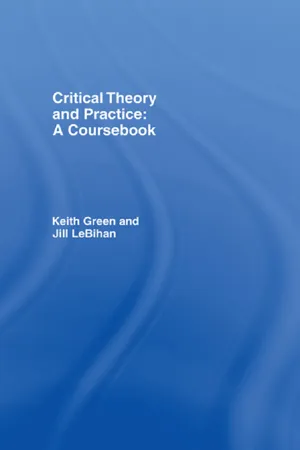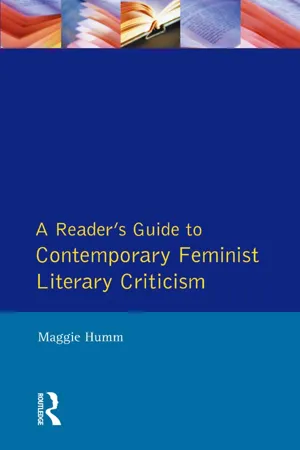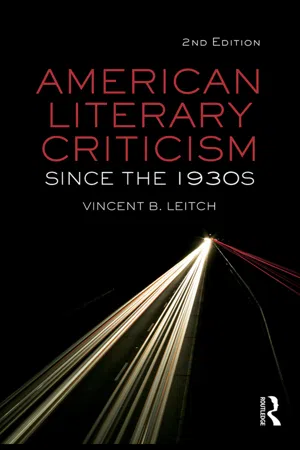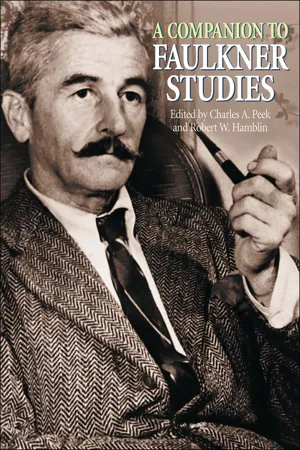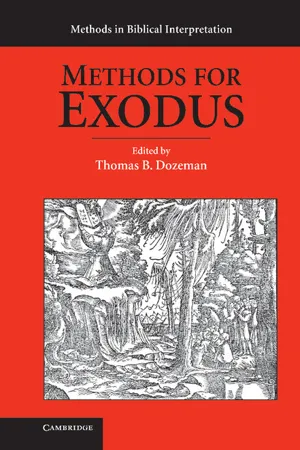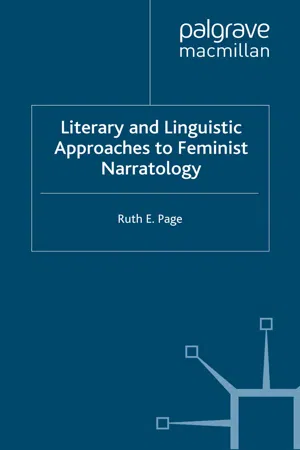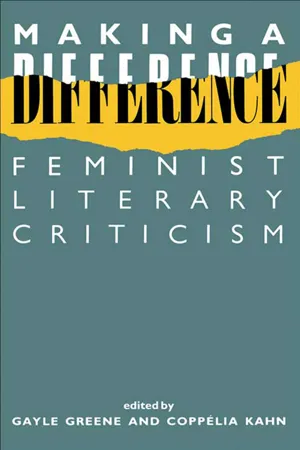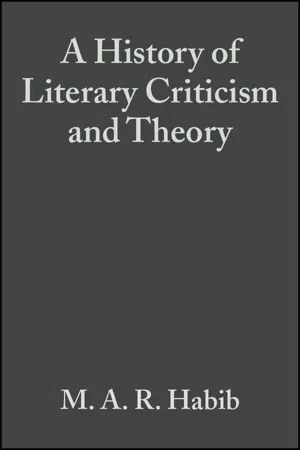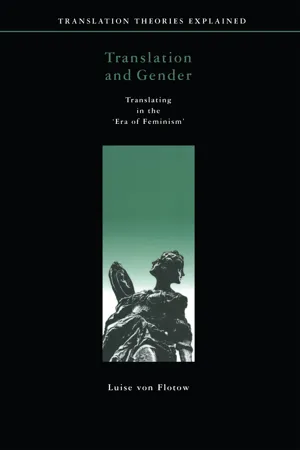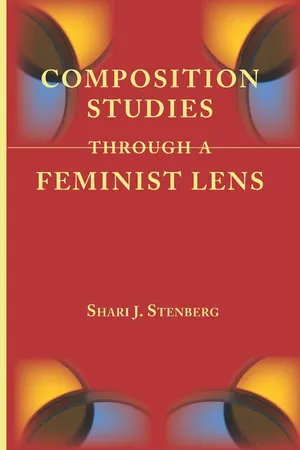Literature
Feminist Literary Criticism
Feminist literary criticism examines how literature reflects and perpetuates the oppression of women, and seeks to challenge and change these representations. It focuses on analyzing the portrayal of female characters, the role of gender in storytelling, and the influence of patriarchal norms on literary works. This approach aims to uncover and address gender biases and inequalities in literature.
Written by Perlego with AI-assistance
Related key terms
1 of 5
12 Key excerpts on "Feminist Literary Criticism"
- Vincent B. Leitch(Author)
- 2019(Publication Date)
- Columbia University Press(Publisher)
From the early seventies to the mid-eighties, Feminist Literary Criticism displayed the political and methodological diversity characteristic of the broader women's movement. As the number of participants in the critical movement quickly proliferated, so too did the number of critical ap-proaches increase. In Feminist Literary Studies: An Introduction (1984), K. K. Ruthven identified seven distinct types of feminist criticism: There are sociofeminists whose interest in the roles assigned to women in our society prompt studies of the ways in which women are represented in literary texts (images of women); there arc semiofeminists whose point of depar-ture is semiotics, the science of signs, and who study the signifying practices by means of which females are coded and classified as women in order to be assigned their social roles; there are psychofeminists who forage in Freud and Lacan for a theory of feminine sexuality unconstrained by male norms and categories, and who examine literary texts for unconscious articulations of feminine desire or traces of where it has been repressed; there are marxist feminists more interested in oppression than repression, and who process literary texts in a recognisably marxist manner, infiltrating woman into their discourse at precisely those points where in a non-feminist marxist analysis you would expect to encounter the working class; and there are socio-semio-psycho-marxist feminists who do a little bit of everything as the occa-sion arises. There are lesbian feminists who promulgate a somatic theory of writing, exploring the connection between sexuality and textuality by looking to the labia as the source of a distinctively feminine writing (écriture feminine), thus countering that dominandv phallocentric myth of writing as an erectile and ejaculatory activity.- eBook - ePub
- Keith Green, Jill LeBihan(Authors)
- 2006(Publication Date)
- Routledge(Publisher)
Whilst many literary critics, students and academics may not have an opinion on certain theoretical discourses – for example, deconstruction or psychoanalysis – so great is the contemporary significance of feminist debates in literature and criticism that few people would admit to not having the first idea of what feminist criticism is about. Whether or not this is an accurate idea of what some feminist critics think they’re about is another matter entirely. i) Read the following definitions of feminist criticism and list any major issues that they have in common. The feminist reader is enlisted in the process of changing the gender relations which prevail in our society, and she regards the practice of reading as one of the sites in the struggle for change. (Belsey and Moore 1989: 1) Most feminist critics speak … like people who must bear witness, people who must enact and express in their own lives and words the revisionary discovery that the experiences of women in and with literature are different from those of men. (Sandra Gilbert, quoted in Showalter 1986: 5) Feminist critics generally agree that the oppression of women is a fact of life, that gender leaves its traces in literary texts and on literary history, and that feminist criticism plays a worthwhile part in the struggle to end oppression in the world outside of texts … feminists are always engaged in an explicitly political enterprise, always working to change existing power structures both inside and outside academia. Its overtly political nature is perhaps the single most distinguishing feature of feminist scholarly work. (Warhol and Price Herndl 1991: x) Feminism is a politics. It is a politics directed at changing existing power relations between women and men in society. These power relations structure all areas of life, the family, education and welfare, the worlds of work and politics, culture and leisure - Maggie Humm(Author)
- 2015(Publication Date)
- Routledge(Publisher)
In the 1970s feminist criticism moved into a new phase – gynocriticism, or the study of women writers – with the first anthology of Feminist Literary Criticism_ Images of Women in Fiction (Cornillon, 1972). Annis Pratt, Elaine Showalter, Sandra Gilbert and Susan Gubar and Alice Walker were rediscovering many neglected women writers while Ellen Moers’s Literary Women (1977) gave shape to a tradition of women’s literature. Although it was attacked in the 1980s for its partial racism, homophobia and idiosyncratic choices, Literary Women was one of the first texts of feminist criticism to give women writers a history, describe women’s choices of literary expression, and to make an identificatory celebration of the power of women writers: ‘There is no point saying what women cannot do in literature, for history shows they have done it all’ (Moers, 1977, p. xiii). The need to replace masculinist values with a new form of feminist criticism was the task of Josephine Donovan’s Feminist Literary Criticism (1975). The volume is a good example of the diversity of feminist approaches at that time, ranging as it does across bibliographies, linguistic research, and the retrieval of feminist literary mothers (Woolf). While Feminist Literary Criticism remains time bound in its focus on androgyny or integrated sex-roles (although Donovan herself preferred the term ‘cultural’ feminism) the book prophetically included a vivid femmes de lettres, or dialogue, between Carolyn Heilbrun and Catharine Stimpson – a form which has come to revolutionise feminist criticism, as in Audre Lorde’s ‘An Open Letter to Mary Daly’. A constant theme in feminist writing in this period is the issue of communication, as the titles of feminist books make clear: Tillie Olsen’s Silences and Adrienne Rich’s The Dream of a Common Language. The need to explore a separate, distinctive woman’s language and to establish a body of literary criticism were the vital work of this decade- eBook - ePub
- Vincent B. Leitch(Author)
- 2009(Publication Date)
- Routledge(Publisher)
Pluralistic or not, feminist critical theorists generally sought (1) to counter conscious and unconscious patriarchal presuppositions, (2) to explore women’s literature, and (3) to examine the biological, linguistic, psychological, social, historical, and/or political shaping forces on life, literature, and criticism. Showalter labeled the first of these tasks “feminist critique,” the second “gynocritics” after the French coinage la gynocritique, and the third “cultural criticism.” 9 Not surprisingly, many feminists regarded these three endeavors as dialectically interrelated, which Josephine Donovan early made clear in the Afterword to her collection of essays by diverse hands titled Feminist Literary Criticism: Explorations in Theory (1975). Many leading American feminists practiced a coordinated mode of critical analysis involving receptionist, judicial, and sociohistorical approaches to literature. Traditionally discredited, women’s subjective and intuitive responses to literary texts became a means to resist the exclusions produced by purported objective criticism while affirming the personal commitment and sense of awakening engendered by the women’s movement. The analogue to such critical receptionism was the small consciousness-raising groups fostered by the movement during its earliest days. The judicial tendency of feminist criticism revived the whole issue of aesthetic value, which had been repressed or downplayed by almost all schools of postwar criticism. 10 What made a literary work superior? inferior? valuable? worthless? On what grounds were so many women writers excluded from the canon? omitted from textbooks? consigned to the dustbin of history? When women were belatedly added to the canon, was it because they were “representative” women or great writers? The general effect of such feminist inquiries was to suggest that conventional aesthetic standards needed overhauling - eBook - PDF
- Charles Peek, Robert W. Hamblin, Charles Peek, Robert W. Hamblin(Authors)
- 2004(Publication Date)
- Greenwood(Publisher)
Because women often operate as the "Other," investigating their roles requires both analyzing the char- acters' themselves and analyzing the patterns of male representation and reac- tion to them. No single critical approach or set of conclusions constitutes feminist interpretations of Faulkner (invoking the term "feminisms" instead). In "Feminist Criticism," in Redrawing the Boundaries: The Transformation of English and American Literary Studies, Catherine Stimpson succinctly summa- rizes the five ways that feminist critics proceed: (1) by charting the course of women as writers, who they are, how and why they write, their reception and reputations—a job that Elaine Showalter has named "gynocritics"; (2) by charting the cultural representations of gender, patterns of masculinity and femininity, a complementary task that Alice A. Jardine calls "gynesis"; (3) by showing the complex relations among these representations and patterns of masculine dominance and then asking for the erasure of such patterns (feminist critics are like cartographers of the vanishing rain forest who both see and stop the damage); (4) by establishing the unreliability of other maps because they overlook or misconstrue women and the issue of gender; (5) by so doing, stimulating vigilance about the processes of map making themselves. (251) Within these major areas, a great number of theoretical strategies or "maps" emerge. The theoretical underpinnings offer a variety of interpretations, often complementary, often contradictory. Many of these theories begin with the con- cepts of psychoanalytic and structural criticism to build on, vary from, or con- tradict. How one's sexual identity is formed, whether gender is socially or biologically constructed, how language constructs our realities—these are among the myriad issues feminist critics analyze. Several threads are worth not- ing before turning to the work of feminist critics on Faulkner. - eBook - PDF
- Thomas B. Dozeman(Author)
- 2010(Publication Date)
- Cambridge University Press(Publisher)
Her study gave rise to the scholarship now referred to by the umbrella term “feminist criticism.” At its start, feminist criticism was hardly comprehensive; it defies defi- nition. It is fair to say, however, that the scholarship of the women’s move- ment was intended to challenge traditional understanding of women and their roles – both past and present. Specifically, a common concern of this work was to scrutinize and reform constructions of reality that were formerly thought to be “objective” truth but were, in fact, exposed as reflections and biases of white, middle-class men, and other dominant social groups. The recognition that men’s perspectives had shaped ear- lier investigations of biblical data led to further analytical nuances in the history of the development of feminist criticism at this time. Subsequent efforts to study the Hebrew Bible from a feminist perspec- tive made clear that women’s interests are not universal. This insight has led to a proliferation of approaches to the biblical text based on a con- cern for gender that sought to understand how notions of womanhood are socially constructed. By the twenty-first century, feminism has come to include other perspectives on the social location of the interpreter beyond gender. Feminist criticism includes differences of race, social class, ethnicity, gender orientation, and cultural imperialism that func- tion as sources of oppressions. Thus, while feminist criticism began as an attempt to redress the omission of women from the history of biblical interpretation, it was soon recognized to address primarily the interests of white, North American, middle-class, heterosexual women. Race, Social Class, and Ethnicity Based Feminism African American women challenged the uncritical awareness of early feminist writing that failed to address differences in experience grounded in race, class, and ethnicity. African American feminists celebrated their - R. Page(Author)
- 2006(Publication Date)
- Palgrave Macmillan(Publisher)
Feminist narratology thus has similar emphases to strands of the Feminist Literary Criticism of this time, with its insistence that ‘all interpretation is political’ (Belsey and Moore, 1989: 1) and a desire to draw attention to the work of women authors that had been neglected in earlier studies. Within the diversity of American Feminist Literary Criticism in the 1980s, the influence of French theorists such as Cixous, Irigaray and Kristeva also began to be felt (and contested) as their works were translated and disseminated. This is less obvious in Lanser’s (1986) paper, but the vision of a specifically feminine discourse as envisioned through psychoanalytically derived models of language, desire and sexuality also informed later feminist analyses of narrative theory and literature (Winnett, 1990). While there are important differences between these currents of Feminist Literary Criticism, both gynocriticism Feminist Narratology in Context 9 and écriture feminine imply a model of analyzing ‘feminine’ texts as different from ‘masculine’. This opposition is interpreted within a hier- archical framework of power relations, where the recovery of ‘feminine’ alternatives is seen as a form of emancipation and cultural revision. The feminism of 1980s feminist narratology is thus very much a product of its time, imbued with a second wave agenda of overturning inequality towards women, but framing this within a specifically literary context. By the end of the 1990s, concepts of gender had radically altered under the influence of poststructuralist theorizing, especially that laid out by Judith Butler (1990, 1993). No longer was the focus on a binary model of difference but on the ways in which gender might be performed in various ways and in different contexts.- No longer available |Learn more
- Gayle Green, Coppélia Kahn(Authors)
- 2003(Publication Date)
- Taylor & Francis(Publisher)
2 Varieties of feminist criticism SYDNEY JANET KAPLAN*Feminist criticism begins, according to Sydney Janet Kaplan, in the personal response of women readers to women writers, and in the implicit repudiation of any critical stance which claims to be objective. It then branches into several paths: revisionary criticism of the canon, the study of neglected or lost women writers, and the articulation of a distinctive female literary tradition. Surveying the attempts of Spacks, Pratt, Moers and Showalter to identify the patterns of influence and common concerns of such a tradition, Kaplan considers the extent to which they ground women’s writing in the cultural moment of its time and place, and she assesses Showalter’s use of the anthropological model of a woman-centred female subculture. Kaplan sees the diversity of feminist criticism, its eclecticism and ability to incorporate a variety of critical approaches, as its strength, but she points out the tension between this tendency—Kolodny’s ‘playful pluralism’—and the movement towards a monolithic theory advocated by Showalter.For some of us, feminist criticism originated in a recognition of our love for women writers. In this we diverge from many of our sister critics whose awakening was hastened by their urge to reveal the diverse ways women have been oppressed, misinterpreted and trivialized by the dominant patriarchal tradition, and to show how these are reflected in the images of women in the works of male authors. The latter approach is important and necessary, but it should be apparent that it has its roots in suffering and anger, while the impetus for the first is passion and identification.These two initiating impulses lead to a variety of critical methods and even converge in several places. For instance, studies of the images of women in the works of female authors might also concentrate on the ways in which such images reveal women’s oppression, or on how an author’s own absorption of patriarchal values might cause her to create female characters who fulfil society’s stereotypes of women. By contrast, studies of women in the works of male authors might possibly reveal strong women characters and support of feminist values. The two impulses also converge when the interest in women writers leads to a questioning of the literary canon itself, not only for the stereotyping of women characters and the prevalent misogyny in so many of the famous works of literature, but also for the neglect of works by women writers. - eBook - PDF
A History of Literary Criticism
From Plato to the Present
- M. A. R. Habib(Author)
- 2008(Publication Date)
- Wiley-Blackwell(Publisher)
The most influential work of this kind was Elaine Showalter’s A Literature of their Own (1977), which traced three phases of women’s writing, a “feminine” phase (1840–1880) where women writers imitated male models, a “feminist” phase (1880–1920) during which women chal-lenged those models and their values, and a “female” phase (from 1920) which saw women advocating their own perspectives. Recent debates within American feminism, conducted by figures such as Showalter, Lillian Robinson, Annette Kolodny, and Jane Marcus, have concerned the relationship of female writers to male theories, the need for feminist theory and a female language, the relation of feminism to poststruc-turalist perspectives, as well as continuing problems of political and educational activism. Also hotly debated has been the possible connection of feminism and Marxism. Michèle Barrett’s Women’s Oppression Today: Problems in Marxist Feminist Analysis (1980) attempts to reconcile Marxist and feminist principles in analyzing the repres-entation of gender. Other works in this vein include Judith Newton and Deborah Rosenfelt’s Feminist Criticism and Social Change (1985), which also argues for feminist analysis that takes account of social and economic contexts. A notable recent develop-ment has been the attempt to think through feminism from black and minority per-spectives, as in Alice Walker’s In Search of Our Mothers’ Gardens (1983) and Barbara Smith’s Toward a Black Feminist Criticism (1977). Finally, significant contributions by lesbian critics include Mary Daly’s Gyn /Ecology (1978) and Adrienne Rich’s “Compulsory Heterosexuality and Lesbian Existence” (1980). Judith Butler’s groundbreaking Gender Trouble (1990) was a powerful critique of heterosexual assumptions in feminist theory, feminist criticism 671 of the dualism of masculinity and femininity, in the contexts of Western metaphysics, psychoanalysis, and power structures. - eBook - PDF
- Jo Gill(Author)
- 2007(Publication Date)
- EUP(Publisher)
Introduction T he aim in this book is to draw on the insights of recent feminist scholarship, but not to be restricted to this perspective or to a body of work which might be defined as ‘feminist’ in any historically specific way. The ‘Women’s Poetry’ of the title is not, then, neces-sarily or always a synonym for feminist poetry; instead, it encapsu-lates a whole range of concerns and interests – about women as poets, women as readers, women as speakers and addressees, and women as objects and subjects of the text. A FEMINIST FRAMEWORK The term ‘feminist’ is raised here, and it is important at this point to outline something of the history, the permutations, the potential and the limitations of the term when used in the context of literary studies. Throughout the twentieth century, successive waves of feminist criticism have o ff ered a range of di ff erent ways of thinking about women – as subjects and objects, as producers and consumers of the literary text. In brief, in the s and s, renewed atten-tion (renewed because it revisits the concerns of Enlightenment, fin de siècle and modernist movements) was placed on the represen-tation of women in literature and their exclusion, as writers, from the literary canon. Key figures in this early period included Mary Ellmann’s Thinking about Women ( ) and Kate Millett’s Sexual Politics ( ). From this grew a hugely influential group of studies which emphasised the role of the woman as writer, as a spokesper-son for the experience of her gender, and as a potential force of resistance against patriarchal culture. Chief among the proponents of this ‘gynocritical’ approach were Sandra M. - eBook - PDF
- Luise von Flotow(Author)
- 1997(Publication Date)
- University of Ottawa Press(Publisher)
5. Criticisms The criticisms that have been addressed to feminist approaches to trans-lation and translation studies can be divided into two general types: those that reflect positions outside feminism and favour an 'objective' ap-proach to scholarship and writing, and those that come from within the widening boundaries of feminism and support the view that gender makes a critical difference. The criticisms uttered within a feminist ethics are of particular interest since they advance the discussion, raising new is-sues, adding diversity, and generally rendering feminist work on translation more complex. They challenge positions, foster debate within feminism and engage with other less politically-motivated analytical and practical work on translation. Criticism from Outside Feminisms Despite a substantial body of work on gender as a category that affects human experience, and therefore human knowledge, scholarly work based on notions of'universality' or 'objectivity' is still being produced. This type of scholarship is in itself a form of criticism of feminist or 'inclusive' work since it both ignores contemporary developments and hampers their reception. Especially in those cultures where the women's movement has developed less influence than in the Anglo-American academic sphere, this type of critical response has a number of negative consequences. In such an academic climate, interest in gender can be labelled as unscholarly and threaten a career to the extent that feminist work ceases to be produced. Or, work that addresses gender issues may not be published or disseminated, and thus not trigger discussion, controversy or new ideas. Scholars who continue to work in this area may be marginalized and rendered uncertain, a handicap in the for-mulation and presentation of innovative insights. - eBook - PDF
- Shari J. Stenberg(Author)
- 2013(Publication Date)
- Parlor Press, LLC(Publisher)
For Writing and Discussion 1. What do you see as the limits and possibilities of arguing that women had a distinct way of experiencing writing and the writing process? Why might this argument have been histori-cally necessary? 2. Locate a piece of research explicitly categorized as femi-nist. (A few feminist journals include Differences: A Journal of Feminist Cultural Studies , Hypatia: A Journal of Feminist Philosophy , Journal of Women’s History , Women and Health: A Multidisciplinary Journal of Women’s Health Issues , and Signs: Journal of Women, Culture and Society ). How does the writer define feminist research? In what ways does it challenge re-search norms? In ways does it work within them? Composition Studies Through a Feminist Lens 78 The Evolving use of Experience In the 2003 collection Feminism and Composition, A Critical Sourcebook , Flynn offers a reflective essay entitled “Contextualizing ‘Composing as a Woman’,” which considers what has changed since the publica-tion of her 1988 piece—now heavily anthologized—and why histori-cal context matters. As I soon discuss, Flynn’s piece, as well as other early feminist work, would later be critiqued for relying too heavily on a dichotomous distinction between male and female writers and for overlooking difference within the category of women. However, as Flynn notes, context is crucial: She wrote the essay in a time when feminism was still not adequately present in the field of composition, a time when a strong stance was necessary. As she writes, “It was impor-tant, in the late 1980s, to make a powerful case for differences between men and women, even if we would later need to qualify, refine, and even contradict those claims” (341). Indeed, much of the feminist scholarship that followed served to extend this early advocacy for women’s experience by adding addi-tional lenses through which to view both gender and experience.
Index pages curate the most relevant extracts from our library of academic textbooks. They’ve been created using an in-house natural language model (NLM), each adding context and meaning to key research topics.

